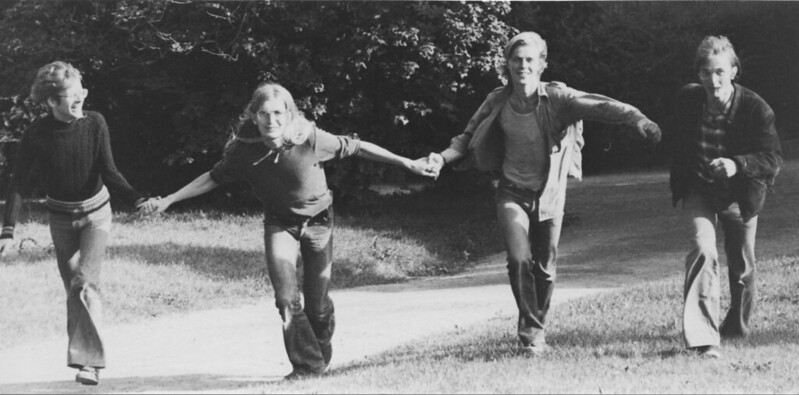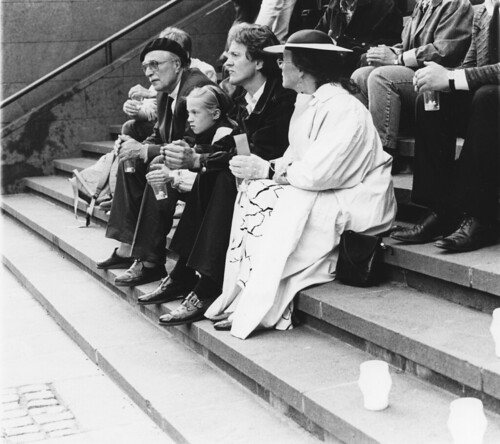Uncovering intra-Nordic queer migration in the 20th century
The view of the Nordic countries today as a place where LGBTIQ individuals and communities can enjoy equality overlooks intra-Nordic variation as well as the complicated histories found in the region. This variation has been a motivation for migration within the Nordics. Much migration, such as from Finland to Sweden and Iceland to Denmark, occurred for already well-documented economic, cultural and historical reasons. However, migration of people seeking freedom to live their lives according to their sexuality and gender identity has often been overlooked. These aspects have been little documented in empirical historical studies, as well as in the popular imagination and literature.

Today, the Nordics are often considered to be an equal, tolerant and permissive region, even as a sort of queer utopia, or at least an exceptionally tolerant area for LGBTIQ (lesbian, gay, bisexual, trans, intersex, and queer) people and communities. However, with a closer look, the differences between the Nordic countries become apparent and Nordic tolerance reveals a more complex history of which there are still visible traces in today’s societies.
The Nordics have not always embraced LGBTIQ communities
A look at the historical attitudes toward homosexuality in the region complicates the generally favourable picture of the Nordics as being tolerant; even though Sweden, Denmark and Iceland decriminalised homosexual acts already in the 1930s and the 1940s, the Nordic countries were for the most part of the twentieth century generally neither tolerant nor accepting to homosexuals or the idea of queerness. Finnish legislation was only changed in 1971 to allow homosexual acts, and in a small, predominantly rural country like Iceland the local attitudes were for a long time less permissive than in densely populated urban areas, such as the Scandinavian metropoles of Copenhagen and Stockholm.
Post-war queer migration
The Nordic countries have been linked politically and culturally for many centuries, which has generated considerable migration between them. After the Second World War, migration within the region became easier with several court decisions on freedom of movement. For queer Finns and Icelanders, this meant an opportunity to migrate to another Nordic country and gain the freedom to live their lives according to their sexuality and gender identity. This aspect of migration – queer migration – between the Nordic countries has, however, not been studied thoroughly.
From Finland to Sweden: empirical studies needed
For example, the post-war migration from Finland to Sweden reached its peak during the late 1960s and the early 1970s. While the main reasons for migration at that time were the lack of employment in Finland, the mass movement also facilitated moving for other reasons, such as searching for LGBTIQ communities. Existing analyses of the stories of the migrants have focused on working life and (heterosexual) nuclear families and queer migration from Finland to Sweden has remained, as a research area, unexplored. Particularly the oral histories of those who migrated should be collected soon, or they will be lost forever.

PICTURE: AIDS Candle Day 23 May 1993. Source: Seta's archive.
From Iceland to Denmark: analysis of queer history
A similar story can be told about Iceland and migration to Denmark. Copenhagen was for more than four centuries the capital of Iceland and attracted Icelanders for various purposes and reasons; education, politics, business and culture, to name a few. This trend continued even after Iceland became an independent republic in 1944. The relationship between the two countries is a prominent part of Icelandic history, yet there are many aspects that remain unexplored, such as the role that Copenhagen and Denmark played for queer Icelanders as well as Icelandic and Danish queer history. The ‘fact’ that queer Icelanders travelled to and resided in foreign cities in the late 20th century has become well-known in recent years, but this ‘escape’, its scale and consequences for individuals, cultures and queer history has not yet been studied. Some aspects for future research include the migration related to AIDS/HIV during the 1980s when gay men infected with the disease chose to leave Iceland for more community support in Copenhagen.
Other Nordic countries as real and imagined destinations
On the level of popular imagination and literature, imagining queerness in other Nordic countries has served many functions both in Finland and in Iceland. In Finnish fiction, depictions of queer migration to Sweden are still virtually non-existent. In Finnish public discussion in the 1950s, however, Sweden served as a container for homosexuality that the Finnish popular imagination was unable to handle otherwise, but from the 1960s it also served as an example of a place where different ways of living were more easily accepted. To give a more recent example, the role of migration and the need to leave Iceland to live a queer life has appeared in recent historical Icelandic fiction, set in the mid- or late 20th century. These novels portray Iceland as a place where queer lives cannot be lived happily; 20th century Iceland is thus a place of silence and suffering for queer characters.
These previously overlooked perspectives offer exciting opportunities still largely unexplored in research.
Further reading:
- Jens Rydström and Kati Mustola, eds., Criminally Queer: Homosexuality and Criminal Law in Scandinavia 1842-1999. (Amsterdam: Aksant, 2007).
- Sjón, Moonstone: The Boy Who Never Was. Transl. Victoria Cribb. (London: Sceptre, 2016).